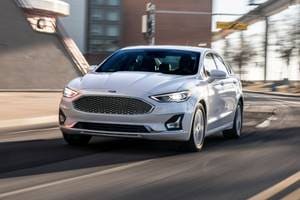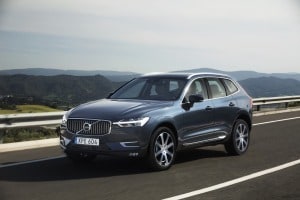Auto Industry Trends For 2013

Auto sales soared in 2012, and, as of mid-December, are on track to rise nearly 14 percent to a post-recession high of 14.5 million. Several factors — including optimism from higher stocks and home prices, more widely available credit, an increasingly aged fleet, and a host of new models in popular segments — brought a growing stream of buyers into dealerships this year, creating a bright spot in a shaky U.S. economy. Even more auto sales growth is expected in 2013; Edmunds.com's forecast is 15 million. Auto sales, along with the recovering housing market, will lead economic growth, reducing the need for government stimulus programs.
Many of the same factors now in play will continue to support car sales momentum in 2013. There will even be additional growth from the return of subprime lending allowing the release of pent-up demand from subprime borrowers who were unable to finance new cars in recent years. Sales also will receive a boost in 2013 from an expected nearly 500,000 additional lease returners, compared to 2012, who will lease or buy a new vehicle when their current leases end.
Trucks will finally see some renewed love in 2013, thanks to the all-new 2013 Ram 1500, 2014 Chevy Silverado 1500, and 2014 GMC Sierra and greater demand from new home construction and post-Sandy rebuilding. More love is also in store for fuel-efficient vehicles, especially compact cars, subcompact cars, and hybrids. Despite fairly stable gas prices, consumers are finally ready to commit to these segments for longer than the length of a gas price spike. They are not willing to commit to all-electric vehicles, though, so automakers will increasingly focus their efforts on plug-in hybrids and hybrids. And, for those consumers wanting hybrid technology without the hybrid cost, more and more hybrid features will be found in lower-priced conventional cars as manufacturers ramp up their efforts to meet the government's Corporate Average Fuel Economy (CAFE) standards.
Indeed, competition will be fierce among automakers, with no major automakers fighting bankruptcies or recovering from natural disasters. And, as 2012 has shown, the potential market share battles will extend beyond the top tier of the U.S. market, with traditionally smaller players such as Volkswagen throwing their hats into the ring in a serious way. In addition to the typical evolutions in fuel efficiency, comfort, and style, automakers will strive to distinguish their vehicles by developing and offering more active safety technologies on more vehicles — from lane departure warnings and blind spot alerts, all the way to driverless cars.
Growth in the new car market will benefit the used car market next year as well. The surge of off-lease vehicles and older trade-ins will boost used car inventories in a range of model years. As a result, prices will soften up to $200 to $300 less per vehicle, on average. Of course, weaker used car prices is one trend that won't help new car sales, as some buyers on the fence will choose to buy used rather than new.
But the auto industry is not out of the woods yet, largely due to the struggling U.S. economy. In 2012, U.S. business spending and hiring slowed amidst fiscal uncertainty and concerns about global economic weakness. Unfortunately, uncertainty is likely to persist in the U.S. in 2013 as the government continues to tackle its budget issues, leaving consumers and businesses with unresolved questions about their future financial situations. The outlook for Europe remains dismal with ongoing debt problems and recession. But there is at least one ray of hope: China has finally turned a corner and should show increasing strength in 2013. Still, uncertainty at home and weakness abroad will slow U.S. economic growth in 2013, including car sales whose growth rate will slow to 4 percent — the first year of single digit growth since the recovery began.
The bottom line: The U.S. auto industry has shown sustained momentum the past few years, making solid progress toward recovery of pre-recession sales levels. Momentum will slow in 2013 but growth will continue. What's especially encouraging for the economy is the current competitive strength of the automakers. Consumers will continue to benefit from exciting new models and technologies — and potentially lower prices — as automakers fight for market share, making 2013 especially interesting to watch.
Lacey Plache is the Chief Economist and Michelle Krebs is the Senior Analyst for Edmunds.com. Follow @AutoEconomist and @MichKrebs on Twitter.






